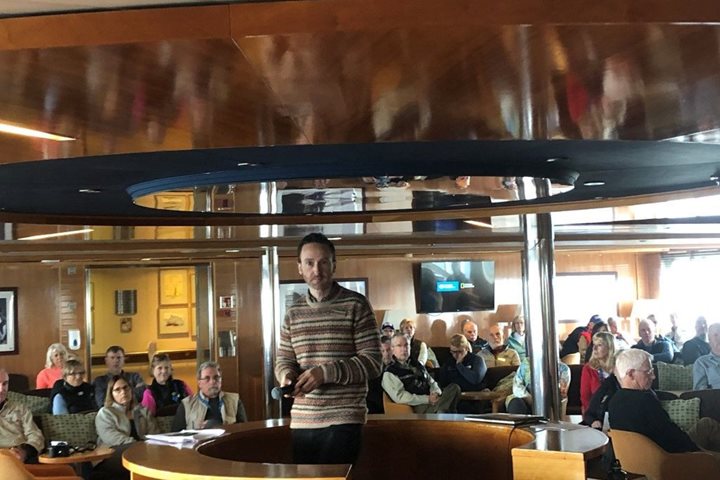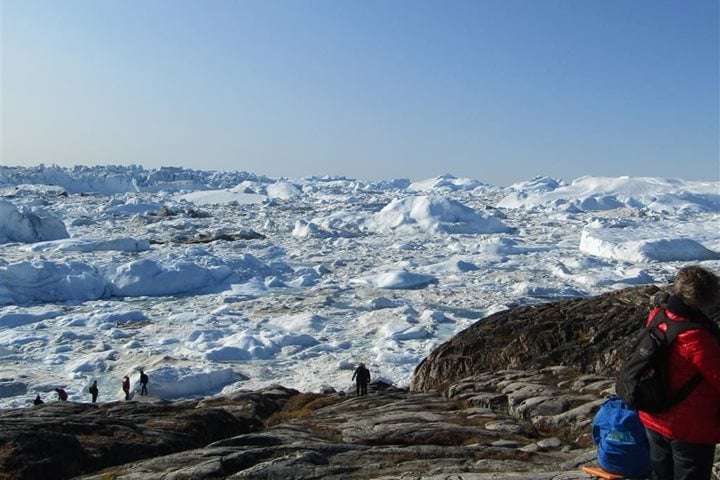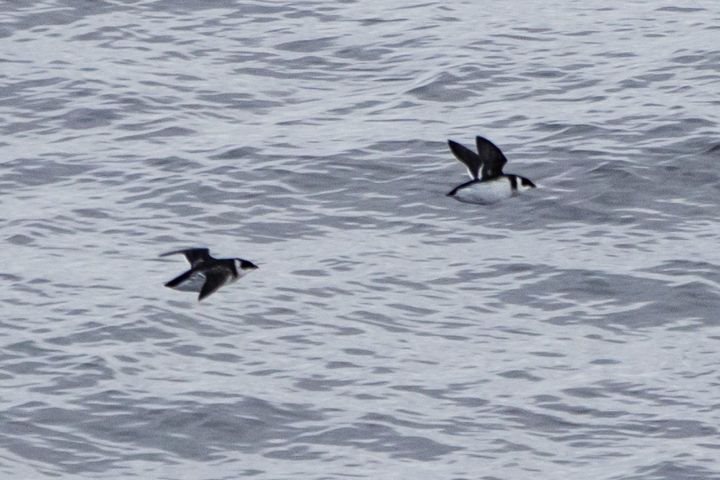We had a marvelous start to our day. Not long before breakfast a number of fin whales were spotted not far from the ship. Nicknamed the “greyhound of the sea” because of the speed they usually swim at, they are the second largest species of cetacean and we were treated to a truly amazing close-up sighting. Our morning activities concentrated on an exploration of the remote western coastline of Greenland in the area known as Qilakitsoq. The name means “the sky is low” and is a reference to the common occurrence here of fogs. After breakfast we made a shore landing on a pebbly beach that forms the entrance to a small semi-circular, low-lying grassy hollow. For centuries Thule hunter-gatherers lived here exploiting the rich marine resources of the area. Remains of a number of their sod- and stone-built winter dwellings and summer tents have been located, in addition to middens or refuse layers. The butchered bones of narwhal, beluga, seal, walrus, polar bear, ptarmigan, and dovekies have been identified and give us an insight into the diet of the inhabitants of this small community, which would have numbered around 30 people.
Qilakitsoq is famous as the find spot of one of Greenland’s most important archaeological discoveries, namely eight ancient Thule mummies. Two ptarmigan hunters in 1972 noticed an unusual pattern in the stones lying beneath a rocky overhang and on closer inspection found the cache of mummies. They immediately notified the authorities but it was a further five years before the site was archaeologically investigated. The mummies were clad in full winter clothing made from seal and caribou skins and were interlayered with sealskin blankets. In Thule tradition it was believed that the journey to the next life was a long and cold one and so they had been well prepared for this. The mummy which caught the public’s attention was that of a six-month old child clad in sealskin anorak and pants. The mummies appear to have been buried over a period of time and specialist examination of the remains failed to ascertain the causes of death. They have been dated to around 1475 A.D. and four of the best-preserved are at present displayed in the National Museum in Nuuk. Many of the guests made their way down along the scree slope to the overhang to see the actual gravesite and explored the remnants of the ancient hunter’s camp. In addition there are a number of small stone-built graves containing the skeletal remains of erstwhile members of this Thule community who eked out a livelihood along this remote and inhospitable northern coastline over 500 years ago.
In the afternoon there were a number of presentations in the lounge, which detailed various aspects of the area as the National Geographic Explorer made its way toward the coast of Canada across Baffin Bay.







